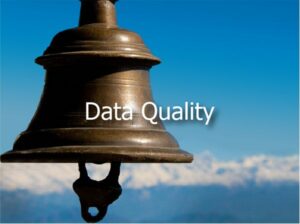
In part one of this blog post, we described why there are many challenges for developers of data pipeline testing tools (complexities of technologies, large variety of data structures and formats, and the need to support diverse CI/CD pipelines). More than 15 distinct categories of test tools that pipeline developers need were described.
Part two delves into these complexities and highlights the intricacies that stand in the way of universal testing tools that can be applied to a wide variety of data pipelines. Then, we outline how you can find individual data pipeline testing tools and frameworks to meet your needs.
Consider Options for Data Pipeline Test Tool Frameworks
What are the real-life solutions to data pipeline owners’ challenges when selecting automated test tools to support their diverse data pipeline testing requirements?
Data management systems’ diversity and intricacy can make selecting automated test tools for data pipelines challenging. However, practical solutions can aid data pipeline owners in making wise choices.
- Modular tool frameworks: Rather than opting for a single monolithic tool, consider modular frameworks that allow plug-and-play capabilities. These frameworks enable pipeline owners to integrate specific testing modules or plugins tailored for each unique technology or requirement. The benefit: Supplies flexibility to adapt to various technologies and can be easily extended as pipeline components evolve or change.
- Hybrid tool selection: Instead of seeking one tool to do it all, use a combination of specialized tools. For instance, use one tool dedicated to real-time data stream validation and another for batch processing validation. The benefit: Using the strengths of specialized tools ensures comprehensive coverage and deep insights into specific pipeline components.
- Continuous integration and continuous deployment (CI/CD) integration: opt for testing tools that seamlessly integrate into existing CI/CD pipelines. This ensures that automated testing becomes a routine part of the development and deployment cycle. The benefit: Facilitates early detection of issues, streamlined deployment, and consistent testing throughout the development lifecycle.
- Community and vendor support: Prioritize tools that have strong community or vendor support. Active forums, regular updates, extensive documentation, and responsive customer support can be pivotal, especially when faced with unique challenges or adapting to newer technologies. The benefit: Ensures longevity of the tool, timely assistance, and access to a pool of knowledge and solutions from developers and users.
- Pilot testing and iterative evaluation: Before making a long-term commitment, conduct pilot tests with potential tools on representative subsets of the data pipeline. This direct evaluation provides insights into tool capabilities, limitations, and compatibility with specific pipeline technologies. The benefit: Reduces the risk of committing to a tool that might not be a good fit, ensuring that the selected solution aligns closely with the pipeline’s unique demands.
Incorporating solutions offers a structured approach to the tool selection dilemma, allowing data pipeline owners to make choices that cater to their immediate needs and often remain adaptable and efficient in the face of future technological evolutions.
For each of these categories, the detection of errors is of paramount importance. Failures or discrepancies in data processing can lead to significant downstream issues, potentially compromising business decisions or system operations reliant on the data.
Data pipeline workflows encompass many operations, from extraction and transformation to loading, validation, and monitoring. Accordingly, various automated test tools are designed to cater to these workflows’ various stages and needs.
Plan a Path to Test Automation Solutions
While selecting tools, ensuring they align with your current and near-future needs is essential. It is often better to choose a tool with more capability than you currently need rather than one you will soon outgrow.
Define testing goals: Find each potential test tool’s purpose: validation, regression, performance, etc. Understand the scope and nature of your data: structured, unstructured, real-time, batch.
Define testing requirements: Define the desired features of testing tools, then decide on the types of tests needed: unit, integration, end-to-end, and load testing.
Categorize required features and capabilities:
- Flexibility: Will tools support a wide range of data formats and sources?
- Scalability: Can they manage the expected data volume?
- Integration: Do they integrate easily with your existing systems, e.g., CI/CD tools, data platforms, and alerting systems?
- Usability: Are tools user-friendly, or do they have a steep learning curve?
- Community and support: Is there a strong community and/or official support?
Outline the requirements for reporting and analytics:
- The best testing tools should supply detailed logs and analytics, allowing for easy debugging and understanding of test outcomes
- Decide if the tool’s reporting meets your team’s needs
Describe your needs for extensibility and customization:
- Check if the tool allows you to write custom plugins or extensions
- Figure out if you can easily change it to suit evolving requirements
Discover Available Tools
Discovering developers’ tools for similar data pipelines requires research, networking, and experimentation. Here is a systematic approach to help you find these tools:
Research available tools: Begin with widely recognized testing tools for data pipelines such as Apache JMeter, Apache Airflow’s built-in testing capabilities, Great Expectations, etc. Consider tools that integrate well with your current tech stack.
Industry forums and communities:
- Data engineering forums: Websites like Stack Overflow, Data Engineering on Reddit, GitHub, and others can be searched using keywords related to your data sources, transformations, and technologies.
- Conference proceedings: Go through the proceedings of conferences such as Strata Data, Spark + AI Summit. Often, developers present their data pipelines, and you can gain insights into the tools they use.
Networking:
- Meetups: Attend or join local data engineering or specific technology meetups. Interactions can lead to insights about tools in use.
- Workshops and conferences: Attend workshops and conferences focused on data engineering. These events often feature case studies, where tools and methodologies are discussed.
Vendor and product websites: Many tool vendors publish case studies or user stories. Go through these to understand how and where their tools are being used.
Open-source platforms: Platforms like GitHub or GitLab can be a treasure trove. Search for repositories like your pipeline and investigate the tools and technologies they are using.
Industry reports: Industry analysis reports and surveys (like those from Gartner, Forrester, and O’Reilly) supply insights into popular tools and technologies.
Direct outreach: Find companies or teams working on similar data pipelines (through blogs and papers) and reach out directly, expressing your mutual interests and seeking advice.
Supplier documentation: If you are using specific data technologies or platforms (e.g., AWS, Azure, Google Cloud), check their official documentation and blogs for best practices and recommended tools for data pipeline testing.
Internal network: Your co-workers, especially if you are in a larger organization, might have insights or might know someone who does.
Google Scholar: Search for academic and research papers, e.g., Google Scholar, and enter relevant keywords like “data pipeline testing tools,” “data pipeline testing frameworks,” or “data pipeline testing best practices.”
Consultancy firms: Consultancy firms specializing in data engineering or analytics often have broad exposure to different tools and best practices across industries.
Training and online courses: Online platforms offer courses in data engineering. These courses often mention tools and best practices; you can gauge which tools are popular or up-and-coming.
Industry blogs and newsletters: Follow blogs or newsletters focused on data engineering or specific technologies you are interested in. They often discuss tools, their pros and cons, and use cases. Join online communities and forums related to data engineering, data pipelines, or your specific data sources (e.g., Hadoop, Spark, Kafka). Sites like Stack Overflow, Reddit, or specialized forums often discuss the tools and practices developers use.
GitHub and open-source projects: Search GitHub repositories for open-source data pipeline projects or related tools. Many developers openly share their projects and mention the tools they use in their README files.
Professional associations: Consider joining professional associations related to data engineering or data science. They often supply resources, webinars, and networking opportunities that can help you discover popular tools.
AI chats: Query example: “Develop a list of data pipeline testing tools and describe each. Tools to be listed are those often recommended for data pipeline projects. Tools should include those for testing data sources and data types, data transformations, data profiling, data extraction, data ingestion, and data quality verifications. Consider the types of tools that are available from tool vendors, Git-Hub, and open sources.”
Tool comparison platforms: Websites like G2, Capterra, and IT Central Station supply comparisons of tools, including user reviews. You can often infer the contexts in which these tools are used by reading the reviews.
Using a mix of the methods above and continually staying updated with industry trends, you can understand the test tools developers of similar data pipelines use.
Conclusion
In the vast and complex world of data pipelines, the need for testing tools that are both precise and comprehensive cannot be denied. Although the concept of universal testing tools – those that can integrate without any hitches with any data pipeline technology imaginable – continues to be appealing. Accomplishing it isn’t easy due to the wide variety of technologies, their rapid evolution, and the task’s inherent complexity.
Instead of searching for solutions that apply to all situations, the focus should be on finding specialized tools or modular frameworks that supply a combination of adaptability and depth. Implementing this strategy guarantees exhaustive testing tailored to precise requirements and paves the way for innovation in data pipeline testing methodologies.
- SEO Powered Content & PR Distribution. Get Amplified Today.
- PlatoData.Network Vertical Generative Ai. Empower Yourself. Access Here.
- PlatoAiStream. Web3 Intelligence. Knowledge Amplified. Access Here.
- PlatoESG. Carbon, CleanTech, Energy, Environment, Solar, Waste Management. Access Here.
- PlatoHealth. Biotech and Clinical Trials Intelligence. Access Here.
- Source: https://www.dataversity.net/choosing-tools-for-data-pipeline-test-automation-part-2/
- :is
- :not
- :where
- 1
- 15%
- 2022
- a
- About
- above
- academic
- access
- accomplishing
- accordingly
- across
- active
- adapt
- advice
- AI
- Aid
- align
- Aligns
- All
- allow
- Allowing
- allows
- Although
- analytics
- and
- Another
- any
- Apache
- appealing
- applied
- Apply
- approach
- ARE
- AS
- Assistance
- associations
- attend
- Automated
- Automation
- available
- AWS
- Azure
- BE
- becomes
- before
- being
- benefit
- BEST
- best practices
- Better
- Blog
- blogs
- both
- broad
- built-in
- business
- by
- CAN
- cannot
- capabilities
- capability
- case
- Case Studies
- cases
- categories
- cater
- central
- challenges
- challenging
- change
- check
- choices
- Choose
- choosing
- closely
- Cloud
- COM
- combination
- commitment
- committing
- Communities
- community
- Companies
- comparison
- comparisons
- compatibility
- complex
- complexities
- complexity
- components
- comprehensive
- compromising
- concept
- Conduct
- conferences
- Cons
- Consider
- consistent
- contexts
- continually
- continues
- continuous
- courses
- coverage
- Current
- Currently
- curve
- custom
- customer
- Customer Support
- customization
- cycle
- data
- data processing
- data quality
- data science
- DATAVERSITY
- decide
- decisions
- dedicated
- deep
- demands
- deployment
- depth
- describe
- described
- designed
- desired
- detailed
- Detection
- developers
- Development
- different
- direct
- directly
- discover
- discuss
- discussed
- distinct
- diverse
- Diversity
- do
- documentation
- does
- due
- e
- each
- Early
- easily
- easy
- efficient
- enable
- encompass
- end-to-end
- Engineering
- ensures
- ensuring
- Enter
- Errors
- especially
- essential
- etc
- evaluation
- events
- evolution
- evolutions
- evolve
- evolving
- example
- existing
- expectations
- expected
- Exposure
- extended
- extensive
- extraction
- Face
- faced
- failures
- Feature
- Features
- Files
- Find
- finding
- firms
- fit
- Flexibility
- Focus
- focused
- follow
- For
- Forrester
- forums
- frameworks
- from
- future
- G2
- Gain
- Gartner
- gauge
- GitHub
- Go
- Goals
- good
- Google Cloud
- great
- guarantees
- Hadoop
- Have
- help
- here
- highlights
- How
- However
- HTTPS
- if
- immediate
- implementing
- importance
- in
- include
- Including
- individual
- industries
- industry
- inherent
- Innovation
- insights
- instance
- integrate
- integration
- interactions
- interested
- interests
- into
- intricacies
- investigate
- issues
- IT
- join
- joining
- jpg
- kafka
- keywords
- Know
- knowledge
- large
- larger
- lead
- learning
- lifecycle
- like
- limitations
- List
- Listed
- load
- loading
- local
- long-term
- longevity
- make
- Making
- manage
- management
- many
- Meet
- Meets
- Meetups
- mention
- methodologies
- methods
- might
- mix
- modular
- Modules
- monitoring
- Monolithic
- more
- mutual
- Nature
- Need
- needed
- needs
- network
- networking
- Networking opportunities
- newer
- Newsletters
- of
- offer
- Offers
- official
- often
- on
- ONE
- online
- online communities
- open
- open source
- openly
- Operations
- opportunities
- Options
- or
- organization
- Others
- out
- outline
- outreach
- owners
- papers
- Paramount
- part
- path
- paves
- performance
- pilot
- pipeline
- pivotal
- Platforms
- plato
- Plato Data Intelligence
- PlatoData
- plugins
- pool
- Popular
- Post
- potential
- potentially
- Practical
- practices
- precise
- present
- Proceedings
- processing
- Product
- professional
- profiling
- projects
- PROS
- provides
- publish
- purpose
- quality
- range
- rapid
- rather
- reach
- Reading
- real-time
- real-time data
- recognized
- recommended
- regression
- regular
- related
- relevant
- remain
- Reporting
- Reports
- representative
- required
- requirement
- Requirements
- requires
- research
- Resources
- responsive
- Reviews
- Risk
- routine
- Scholar
- Science
- scope
- seamlessly
- Search
- searching
- seeking
- selected
- selecting
- selection
- Share
- should
- significant
- similar
- single
- Sites
- situations
- solution
- Solutions
- Someone
- Soon
- Sources
- Spark
- specialized
- specializing
- specific
- stack
- stages
- stand
- station
- staying
- Stories
- Strategy
- stream
- streamlined
- strengths
- strong
- structured
- structures
- studies
- such
- Suit
- Summit
- supply
- support
- system
- Systems
- tailored
- teams
- tech
- technological
- Technologies
- Technology
- test
- Testing
- tests
- than
- that
- The
- their
- then
- There.
- These
- they
- this
- those
- Through
- throughout
- timely
- to
- tool
- tools
- Transformation
- transformations
- Trends
- two
- types
- understand
- understanding
- unique
- unit
- Universal
- updated
- Updates
- use
- used
- User
- user reviews
- user-friendly
- users
- using
- validation
- variety
- various
- Vast
- vendor
- vendors
- verifications
- volume
- Way..
- we
- Webinars
- websites
- WELL
- were
- when
- which
- WHO
- why
- wide
- Wide range
- widely
- will
- WISE
- with
- without
- workflows
- working
- Workshops
- world
- write
- you
- Your
- zephyrnet











